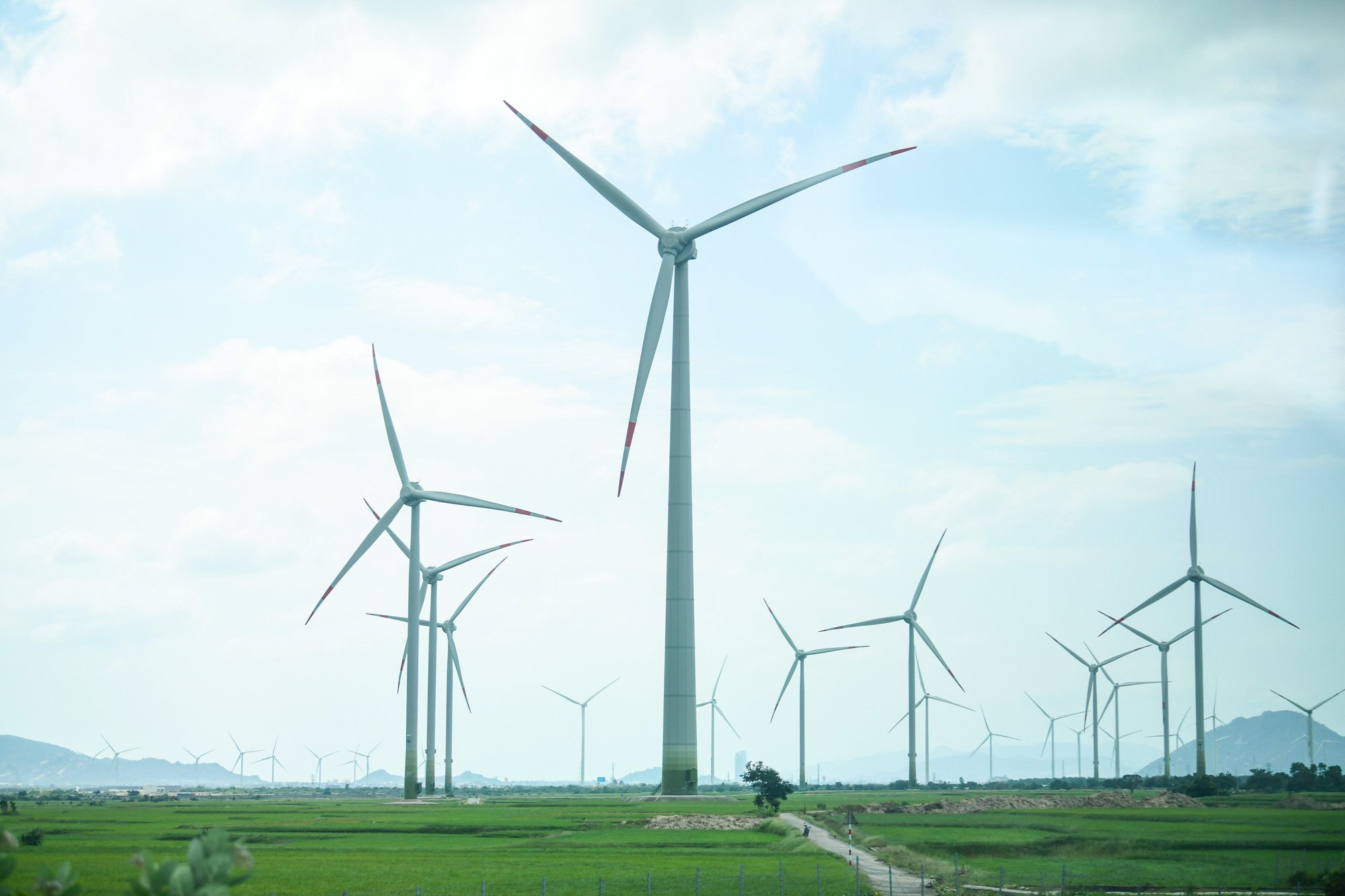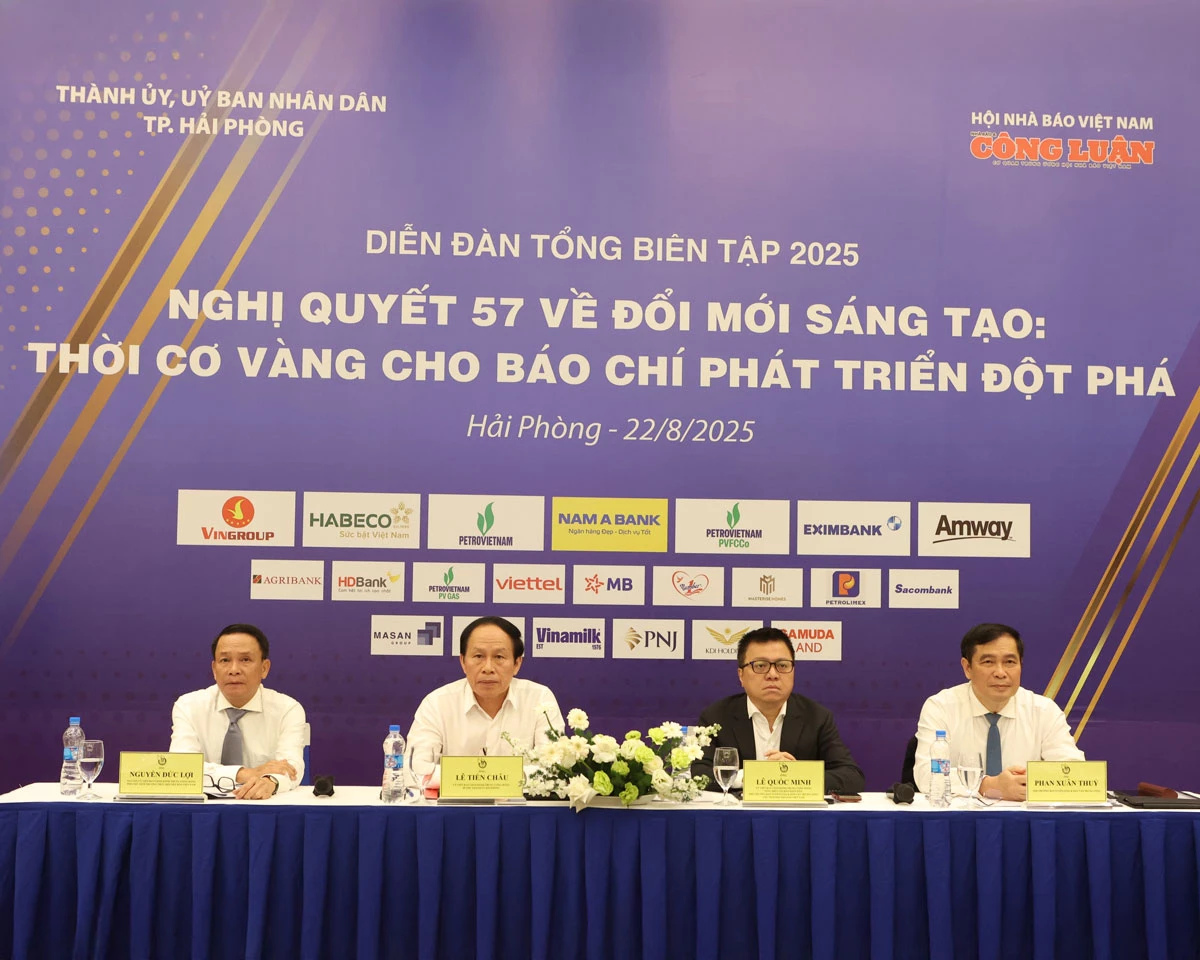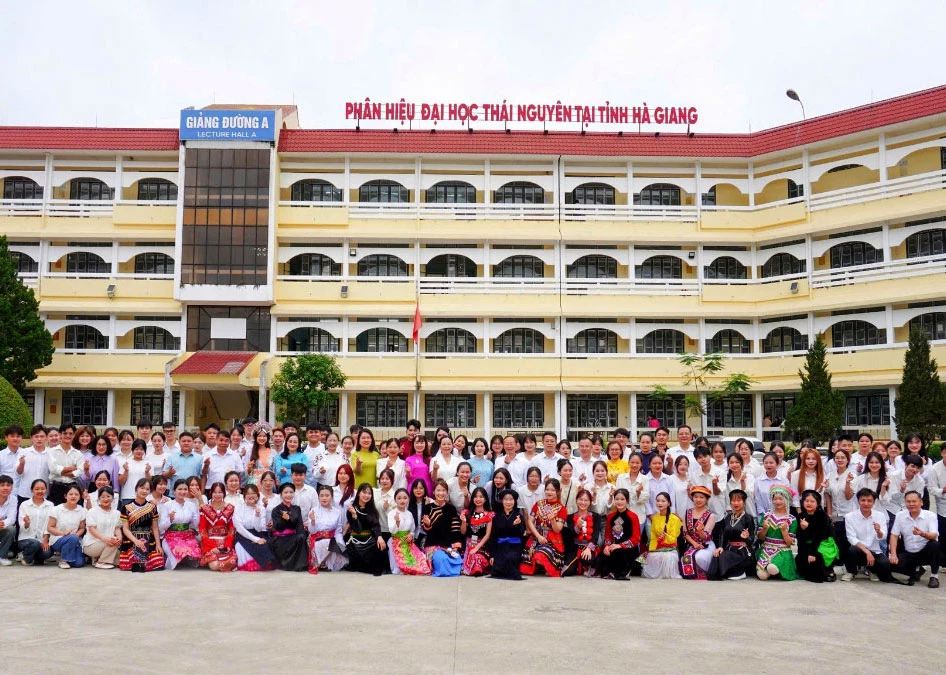Developing flexible power sources associated with reforming the electricity market structure and ancillary services to achieve a carbon-neutral power system

Renewable power systems including wind and solar power need to add flexible power sources to ensure stable system operation - Photo: Q. DINH
Informing Tuoi Tre Online , a representative of Wärtsilä - a global corporation providing carbon emission reduction solutions for the Finnish energy sector - said that with the report "Intersection on the Net zero journey" recently published by the corporation, to achieve the goal of reducing greenhouse gas emissions, along with prioritizing the development of renewable energy sources and battery storage systems, it is necessary to develop flexible power plants that can quickly change capacity to support the balance when renewable energy is unstable.
Overcoming the instability of renewable energy
With a commitment to achieving Net Zero by 2050 and being a regional leader in renewable energy development, Wärtsilä representatives believe that switching to a carbon-neutral electricity system by 2050 could help Vietnam save about 26 billion euros per year.
However, the study also shows that for every GW of renewable energy capacity, the power system will need about 150 MW of flexible power capacity to ensure stability. This is a trend in the global power system, when using flexible power sources brings significant advantages, reducing costs and CO₂ emissions.
The simulations show that this path would save around €65 trillion by 2050 compared to a renewables-only path, or 42% of the cost. This would average €2.5 trillion per year, equivalent to more than 2% of global GDP in 2024.
The flexible power system also helps reduce the total CO₂ emissions of the power sector in the period from now to 2050 by 21% (equivalent to 19 billion tons). At the same time, the optimized power system reduces the wasted renewable energy due to capacity cuts by 88% in 2050 compared to the remaining roadmap.
It is estimated that renewable energy sources could avoid a total of 458,000TWh of curtailment, enough to power the entire world (based on current electricity consumption) for more than 15 years.
Meanwhile, when these plants are in use, they will help halve the newly installed renewable energy capacity and land area needed to achieve carbon neutrality.
According to Wärtsilä representatives, while battery storage systems provide balance on a second- and minute-level, flexible power plants using reciprocating internal combustion engines can handle level fluctuations on an hourly, daily and even seasonal basis.
What needs to be done to build an electricity market according to Power Plan 8?
In Vietnam, Power Plan 8 recognizes flexible power sources in the total power structure from 300MW to be deployed before 2030, and significantly increase to 46,200MW in the period before 2050. Therefore, the development of appropriate market mechanisms to support the deployment of these technologies is necessary to achieve the planning's goals.
Mr. Pham Minh Thanh, country director of Wärtsilä Energy Group in Vietnam, recommended that Vietnam should facilitate the rapid expansion of renewable energy by upgrading the power transmission system, streamlining licensing procedures and investing in inter-regional grid connection infrastructure.
In particular, it is necessary to quickly expand flexible technologies to help balance resources, help the power grid system operate stably and sustainably, and mobilize finance.
At the same time, it is necessary to reform the electricity market structure to increase the proportion of renewable energy. There is a mechanism to balance power sources to provide flexible and optimal supply to the system.
Including reducing the transaction cycle in the competitive electricity market to 5 minutes, providing new ancillary services, having appropriate payment mechanisms. Choosing technology that can adapt to sustainable fuels such as natural gas for flexible balancing, building the necessary infrastructure.
“Vietnam is demonstrating its strong commitment to its Net Zero target by 2050. It is now important to ensure that Power Development Plan 8 is implemented in a timely manner.
Increasing the proportion of renewable energy along with flexible power generation to balance the power system is essential in the next decade, helping Vietnam achieve its set goals," Mr. Thanh recommended.
Source: https://tuoitre.vn/lam-gi-de-viet-nam-tiet-kiem-26-ti-euro-khi-tang-nguon-dien-tai-tao-de-dat-net-zero-20241213092607417.htm





![[Photo] President Luong Cuong receives delegation of the Youth Committee of the Liberal Democratic Party of Japan](https://vstatic.vietnam.vn/vietnam/resource/IMAGE/2025/8/22/2632d7f5cf4f4a8e90ce5f5e1989194a)

![[Photo] Prime Minister Pham Minh Chinh chairs the conference to review the 2024-2025 school year and deploy tasks for the 2025-2026 school year.](https://vstatic.vietnam.vn/vietnam/resource/IMAGE/2025/8/22/2ca5ed79ce6a46a1ac7706a42cefafae)









































































Comment (0)